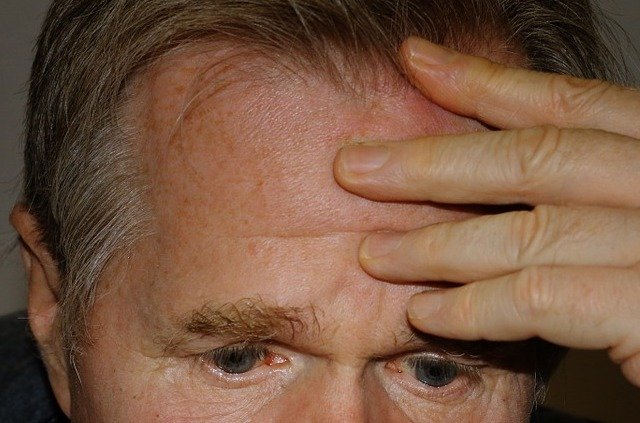
In a new study, researchers found deep forehead wrinkles may be a sign of big health problems, such as heart disease.
Researchers found that people who have lots of deep horizontal forehead wrinkles, more than is typical for their age, may have a higher risk of death risk from heart disease.
The finding may provide an easy and low-cost way to detect people with a higher risk of heart disease.
Previous research has shown that risk of heart disease increases as people get older, but lifestyle and medical interventions can help cut the danger.
However, the real challenge is how to find high-risk patients early enough to help them prevent the disease.
Several studies have analyzed different visible signs of aging, such as tiny wrinkles near the eyes, but they are not effective to predict disease risk.
Another study has found a link between male-pattern baldness and a higher risk of heart disease, but the visual sign is not linked to a higher risk of actually dying.
In the study, the team focused on forehead wrinkles as a marker because it’s very simple and visual.
They examined a group of 3,200 working adults who were all healthy and were aged 32, 42, 52, and 62 at the beginning of the study.
All of the participants were examined by doctors to check the and number and depth of wrinkles on their foreheads. The participants were followed for 20 years.
The team found that during the time 233 people died. Among them, about 15% had scored two and three wrinkles. About 7% had scored one wrinkle and 2.1% had no wrinkles.
They also found people with a wrinkle score of one had a slightly higher risk of dying of heart disease than people with no wrinkles.
Moreover, people who had wrinkle scores of two and three had almost 10 times the risk of dying from heart disease compared with people who had no wrinkles.
The team suggests that the higher the wrinkle score, the higher the heart disease mortality risk increases.
It may be related to the hardening of the arteries due to plaque build-up.
Previous research has shown that changes in collagen protein and oxidative stress may play a part in the hardening of the arteries and wrinkles.
In addition, blood vessels in the forehead are very small and they may be more sensitive to plaque build-up.
The team also suggests that although this is not a better method of finding heart disease risk than current methods, it may help find your heart disease risk earlier.
The test can be combined with classical tests such as blood pressure readings as well as lipid and blood glucose tests.
The researchers suggest people with too much deep forehead wrinkles may need to consider lifestyle changes like getting more exercise or eating healthier food.
One study author is Yolande Esquirol. The study was presented at the ESC Congress.
Copyright © 2019 Knowridge Science Report. All rights reserved.



